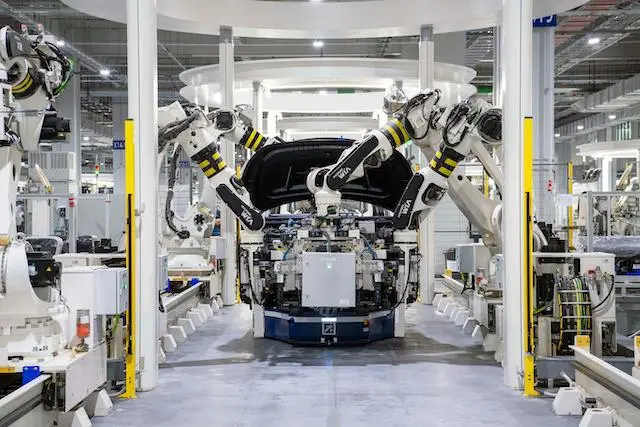Last updated on June 25th, 2025 at 02:55 pm
Generative AI tools and agents are designed to make life more productive by automating manually demanding jobs. They are expected to create room for better opportunities. Amazon’s CEO has stated that the company will reduce its workforce because many roles can now be performed by AI. As a result, human contribution in some roles is no longer necessary, and such jobs will be eliminated.
AI works best when used to augment human effort, and much can be achieved through this collaboration. The combination of human intelligence, creativity, and emotional understanding can significantly improve business outcomes and decision-making. It allows people to focus on higher-value work, bringing tone, intent, and cultural relevance, something AI cannot fully replicate. While AI can be a true force multiplier of human capabilities, some companies are choosing to replace human workers instead of using AI as a supportive tool.
Corporations are adopting AI at a rapid pace, recognizing its value as a cost-effective and strategic asset. AI doesn’t require sick days or breaks; it can operate 24/7 in multiple shifts without fatigue or complaints. Chatbots can efficiently manage customer support, analyze business data in real-time, and monitor supply chains. Businesses are using AI to stay agile and responsive. Tasks that once required teams across multiple time zones can now be handled by AI agents.
There is no doubt that AI is one of the most advanced and transformative technologies developed to date. Unlike past technological innovations, AI doesn’t just extend our physical capabilities, it also enhances our mental and cognitive reach. It learns from massive data sets created by humans and can adapt to new scenarios. In specific tasks like language translation, medical imaging, and strategic games, AI can even outperform humans. This ability to learn and evolve is advancing rapidly, making AI systems more accurate and responsive each day.
Corporations aim to automate operations and production lines even further. This will directly affect jobs that involve repetition or routine tasks, roles that are easily replaced by robots or software. Businesses believe humans should shift to roles that require emotional intelligence, critical thinking, and creativity which are areas where human potential truly shines.
The era of mastering one skill for lifelong job security is coming to an end. Employers now expect the workforce to embrace AI tools to enhance productivity. The job market doesn’t suffer from a lack of opportunities; rather, there is a shortage of workers skilled in using AI technologies.
Many tech companies have been in a layoff frenzy, and Amazon is no exception, often citing restructuring as the reason. Layoffs have continued into 2025 across both tech and other sectors. A major driver of these cuts is cost reduction through AI adoption, as routine jobs become obsolete. Since 2022, Amazon has cut nearly 27,000 jobs in an effort to streamline operations.
At its peak, Amazon was one of the largest employers not only in North America but globally, hiring hundreds of thousands of workers. However, since 2022, layoffs have continued, though at a slower pace. Some departments are more vulnerable to AI-driven changes than others.
Amazon has been an early adopter of AI, implementing the technology across various departments, including its highly efficient fulfillment network. AI is used for demand forecasting, inventory management, and to ensure that warehouse robots operate effectively.
Other tech companies are also reducing staff or freezing hiring. Instead, they aim to maximize the potential of existing employees by having them use AI tools to accomplish tasks. Increasingly, employers are turning to AI for automation in pursuit of cost reduction, speed, and scalability.
Companies like Shopify and Klarna have also laid off employees. Customer support roles are being automated across industries. Engineering and marketing teams are also feeling the pressure, as AI can now handle many of their responsibilities efficiently. This is part of a larger trend in which AI is being adopted to drive cost-cutting and restructure businesses.
Amazon continues to invest heavily in AI and plans to expand those investments into 2025 and beyond. These investments primarily focus on AI infrastructure, such as AWS data centers, AI chips, and cloud computing capacity. With global demand for AI rising rapidly, Amazon’s Bedrock platform is one of its key offerings. Bedrock provides users access to multiple AI tools in a single location, eliminating the need to rely on scattered solutions. Products like Alexa+ and Amazon Q are already benefiting significantly from these advancements in AI.
Update #1: Updated on June 25, 2025
Whether AI will create jobs or make them redundant is still a topic of speculation, but one thing is certain: the hiring process and the way we work are bound to change. At present, AI excels at tasks that can be performed via a computer, but it isn’t yet capable of handling skilled, physically demanding jobs like plumbing. One tech tycoon believes that when certain jobs become redundant, new ones are created to replace them. Meanwhile, many experts involved in developing AI technologies have differing opinions on its long-term impact. One expert believes that entry-level white-collar jobs will be the first to be affected and could drive unemployment rates up to 20% in the coming years. Another sees AI as a tool to free humans from mundane work and shift focus toward creative projects. Some AI visionaries acknowledge that while AI may replace certain roles, humans will remain in control of how it functions and evolves. Other tech leaders argue that AI will open the door to valuable new job opportunities, and that people are capable of adapting and learning how to work alongside AI.
